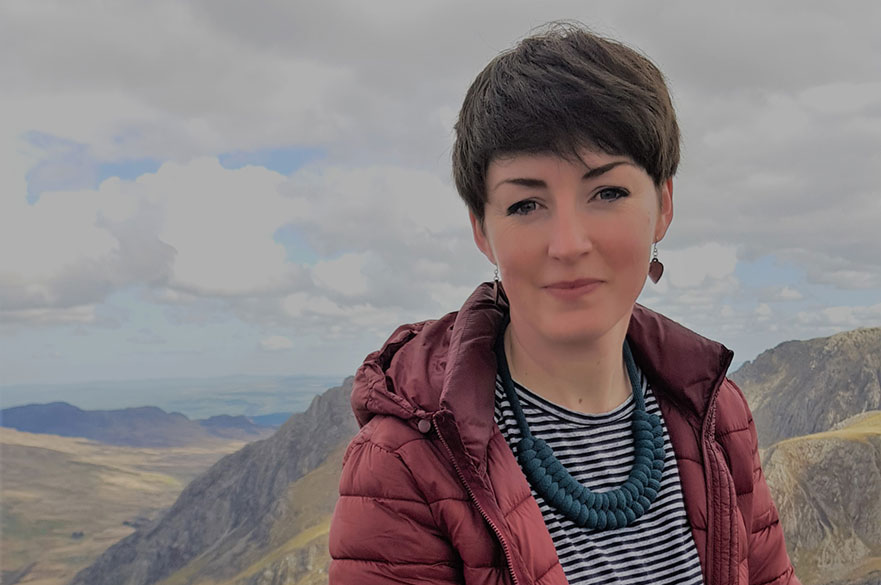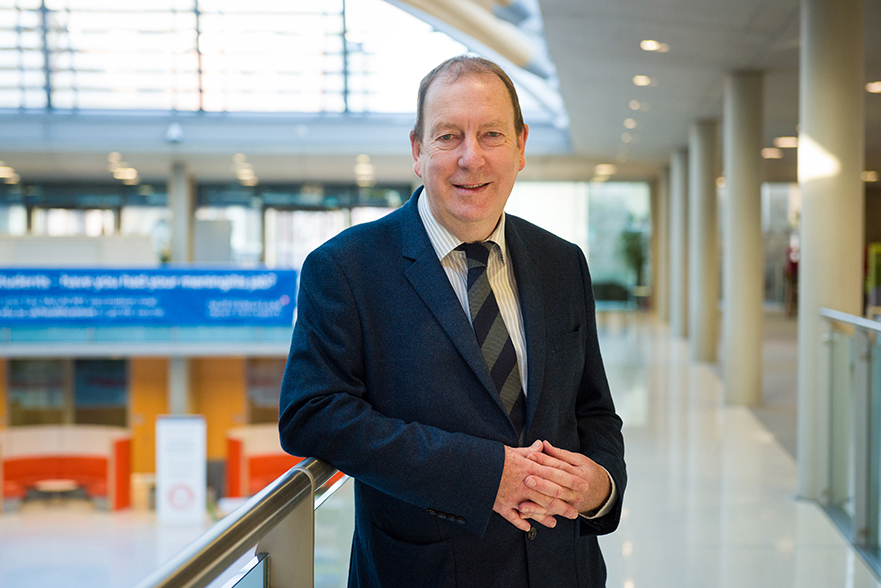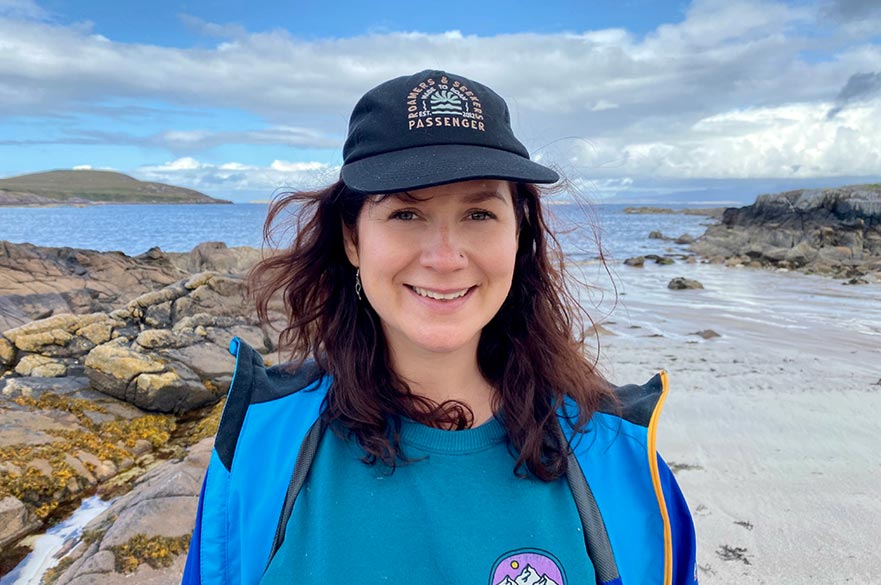Role
Dr Sally Little is a Senior Lecturer in the School of Animal, Rural & Environmental Sciences and is the Course Leader for BSc (Hons) Environmental Science. She is also President of the Estuarine and Coastal Sciences Association and Trustee of the Clean Rivers Trust.
Dr Little is an active researcher and specialises in assessing the impact of environmental, climatic and other anthropogenic pressures on the structural and functional ecology of freshwater, estuarine and marine ecosystems (at individual, through to community level, specialising in macroinvertebrates). Her research extends to how we can mitigate these issues through nature-based solutions, particularly in regards to enhancing carbon sequestration and storage and biodiversity net gain. Dr Little is widely published and is a co-editor on the recently released book ‘Challenges in Estuarine and Coastal Science’ (2022).
She is module lead for the modules:
- Marine and Coastal Ecology UK Field Course
- Marine and Freshwater Ecology
- Introduction to Global Environmental Issues
She contributes to teaching on the modules:
- Conservation Ecology
Dr Little also supervises undergraduate dissertations and postgraduate research projects in ecology, environmental science and physical geography with an emphasis on topics related to aquatic systems, climate change and freshwater, brackish and marine ecology.
Career overview
Dr Little has a BSc (Hons) in Marine Biology and Zoology from Bangor University, a Postgraduate Certificate in Geographic Information Systems (GIS) from Leeds University, a PhD in estuarine ecology from Loughborough University (Centre for Hydrological and Ecosystem Science, Department of Geography) and a Postgraduate Certificate in Academic Practice from NTU.
Before joining the environment team at NTU in 2015, Dr Little worked as a Research Associate at Loughborough University (Centre for Hydrological and Ecosystem Science, Department of Geography) and a Research Associate and Lecturer at the University of Hull (Institute of Estuarine and Coastal Sciences and Department of Geography, Environment and Earth Sciences).
In 2021, Dr Little became President of the Estuarine and Coastal Sciences Association, which works to support, promote and advance multidisciplinary research into estuaries and coasts all around the world.
Dr Little is a Fellow of the Higher Education Academy and trustee of the Clean Rivers Trust.
Research areas
Dr Little’s research interests focus on:
- Estuarine squeeze; the loss of upper-estuarine tidal freshwater and low salinity zones against in-channel man-made barriers through climate driven saline intrusion
- Nature-based solutions; catchment to coast.
- Impacts of climate change on aquatic ecosystems
- Salinisation of freshwater ecosystems
- Mine water discharge impacts on freshwater fauna.
- Tidal freshwater marsh creation
- Inland saltmarshes
Current PhD Students:
Helen Pietkiewicz - The impact of increasing salinity on the structure and functioning of the tidal freshwater zone
Helena Hunter - Algae ecologies: scale, temporality and modes of address in contemporary Anthropocene poetry.
Thomas Clewer - How does fire effect carbon accumulation in European blanket bogs?
Saskia Goeckeritz - An assessment of environmental and anthropogenic pressures on peatland surfaces.
Opportunities to carry out postgraduate research towards an MPhil/PhD in these research areas exist and further information can be obtained from the NTU Graduate School.
External activity
- President of the Estuarine and Coastal Sciences Association (ECSA)
- Trustee of the Clean Rivers Trust.
- Fellow of the Higher Education Academy
- Guest Special Issue Managing Editor for the journal Estuarine, Coastal and Shelf Science
- Academic Fellow of the Marine Biological Association of the UK (MBA)
- Member of the Freshwater Biological Association (FBA)
- Royal Yachting Association (RYA) National Powerboat Level 2 Certificate
- Professional Association of Diving Instructors (PADI) Rescue Diver
Publications
- Little, S., Lewis, J. P. and Pietkiewicz, H., 2022. Defining estuarine squeeze: The loss of upper estuarine transitional zones against in-channel barriers through saline intrusion. Estuarine, Coastal and Shelf Science, 278, 108107. 10.1016/j.ecss.2022.108107
- Humphreys, J and Little, S. 2022. Challenges in Estuarine and Coastal Science. Estuarine and Coastal Sciences Association 50th Anniversary Volume. Pelagic Publishing. ISBN 9781784272852.
- Humphreys, J and Little, S. 2022. Trajectories and Challenges in Estuarine and Coastal Science in: Challenges in Estuarine and Coastal Science. Pelagic Publishing (2022). © John Humphreys and Sally Little. DOI: 10.53061/IWAO4211
- Little, S., Lewis, J.P., Pietkiewicz, H. and Mazik, K. 2022. Estuarine Tidal Freshwater Zones in a Changing Climate: Meeting the Challenge of Saline Incursion and Estuarine Squeeze in: Challenges in Estuarine and Coastal Science. Pelagic Publishing. DOI: 10.53061/VCCR7195.
- Pickwell, A., Constable, D., Chadd, R., Extence, C., & Little, S. 2021. The development of a novel macroinvertebrate indexing tool for the determination of salinity effects in freshwater habitats. River Research and Applications, 1– 17. https://doi.org/10.1002/rra.3914
- Gething, K.J., Little, S. 2020. The importance of artificial drains for macroinvertebrate biodiversity in reclaimed agricultural landscapes. Hydrobiologia 847, 3129–3138. DOI: 10.1007/s10750-020-04325-8
- White, J. C, Armitage, P. D., Bass, J. A. B., Chadd, R. P., Hill, M. J., Mathers, K. L., Little, S. and Wood, P. J. 2019. How freshwater biomonitoring tools vary sub-seasonally reflects temporary river flow regimes. River Research and Applications 1535-1459. DOI: 10.1002/rra.3501.
- Hill, M. J., Mathers, K.L., Little, S., Worral, T., Gunn, J. and Wood, .J. 2019. Ecological effects of a supra-seasonal drought on macroinvertebrate communities differ between near-perennial and ephemeral river reaches. Aquatic Sciences 81:62. DOI: 10.1007/s00027-019-0659-7
- Ducrotoy, J.-P., Elliott, M., Cutts, N. D., Franco, A., Little, S., Mazik, K. and Wilkinson, M. 2019. Temperate Estuaries: Their ecology under future environmental changes. IN Wolanski, E., Day, J. W., Elliott, M and Ramachandran (eds.) Coasts and Estuaries, The Future. Elsevier DOI: 10.1016/B978-0-12-814003-1.00033-2>.
- Little, S., Spencer, K. L., Schuttelaars, H. M., Millward, G. E. and Elliott, M. 2017. Unbounded boundaries and shifting baselines: estuaries and coastal seas in a rapidly changing world. Estuarine, Coastal & Shelf Science. 198: 311-319. DOI: 10.1016/j.ecss.2017.10.010.
- Little, S., Wood, P. J. & Elliott, M. 2017. Quantifying salinity-induced changes on estuarine benthic fauna: The potential implications of climate change. Estuarine, Coastal & Shelf Science. 198: 610-625. DOI: 10.1016/j.ecss.2016.07.020.
- Patrício, J., Little, S., Mazik, K., Papadopoulou, K., Smith, C.J., Teixeira, H., Hoffmann, H., Uyarra, M.C., Solaun, O., Zenetos, A., Kaboglu, G., Kryvenko, O., Churilova, T., Moncheva, S., Bučas, M., Borja, A., Hoepffner, N. and Elliott, M. 2016. European Marine Biodiversity Monitoring Networks: strengths, weaknesses, opportunities and threats. Frontiers in Marine Science. 3:161. DOI: 10.3389/fmars.2016.00161.
- Smith, C.J., Papadopoulou, K-N., Barnard S., Mazik K., Elliott M., Patrício J.M., Solaun O., Little, S. and Borja, A. 2016. Managing the Marine Environment, Conceptual Models and the EU Marine Strategy Framework Directive. Frontiers in Marine Science. 3: 144. DOI:10.3389/fmars.2016.00144.
- Stubbington, R, Gunn, J, Little, S, Worrall, TP, Wood, PJ, 2016. Macroinvertebrate seedbank composition in relation to antecedent duration of drying and multiple wet-dry cycles in a temporary stream. Freshwater Biology, 61 (8) 1365-2427. DOI: 10.1111/fwb.12770.
- Little, S., Franco, A., Bhatia, N., Thomson, S., Smyth, K and Elliott, M. 2015. A Literature Review to inform Condition Assessment and Monitoring of the Habitats Directive Annex I Estuaries Feature in Scottish Waters. Scottish Natural Heritage Commissioned Report No. 813.
- Strong, J. A., Andonegi, E., Bizsel, K. C., Danovaro, R., Elliott, M., Franco, A., Garces, E., Little, S., Mazik, K., Moncheva, S., Papadopoulou, N., Patrício, J., Queirós, A. M., Smith, C., Stefanova, K. and Solaun,, O. 2015. Marine biodiversity and ecosystem function relationships: the potential for practical monitoring applications. Estuarine, Coastal and Shelf Science. 161: 46–64. DOI:10.1016/j.ecss.2015.04.008.
- Stubbington, R., Boulton, A. J., Little, S. & Wood, P. J. 2015. Changes in invertebrate community composition in benthic and hyporheic zones during a severe supra-seasonal drought. Freshwater Science. 34 (1):000-000. DOI: 10.1086/679467.
- Mazik, K., Strong, J., Bhatia, N., Barnard, S., Mander, L., Little, S., & Elliott, M. 2014. Development of recovery principles for habitats and species within Marine Protected Areas around Scotland. Scottish Natural Heritage Commissioned Report.
- Rice, S.P., Little, S., Wood, P.J., Moir, H.J. and Vericat, D., 2010. The relative contributions of ecology and hydraulics to ecohydraulics. River Research and Applications 26 (4): 363-366. DOI: 10.1002/rra.1369.
- Wood, P.J., Boulton, A.J., Little, S. and Stubbington, R., 2010. Is the hyporheic zone a refugium for macroinvertebrates during severe low flow conditions? Fundamental and Applied Limnology 176 (4): 377-390.
- Little, S., Haslehurst, T. and Wood, P. J. 2006. Intra-specific predation and survivorship of Gammarus pulex (Crustacea: Amphipoda) within aquatic karstic habitats. Cave and Karst Science 33 (2): 73-76.
Press expertise
- Estuarine ecology
- The impacts of future environmental change on estuaries and coasts
- Defining and delineating estuarine boundaries
- Impacts of climate change on aquatic ecosystems
-

STAFF PROFILE
Helen Hicks - Senior Lecturer
School of Animal Rural & Environmental SciencesArea of expertise: Agriculture/Horticulture | Animals | Sustainability
-

Dr Little works towards the UN Sustainability Goals 14 (Life Below Water), 13 (Climate Action) and 6 (Clean Water and Sanitation)



